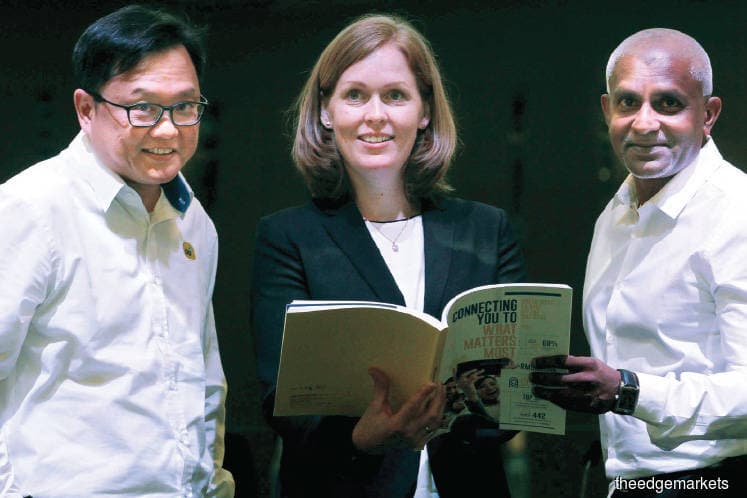
This article first appeared in The Edge Financial Daily on May 15, 2019
KUALA LUMPUR: DiGi.Com Bhd, which is in the midst of merger talks with Axiata Group Bhd, is looking to drive growth in its post-paid subscriber base by converting its pre-paid users to boost its service revenue and expanding its market share in this segment.
But service revenue growth for financial year 2019 is still expected to be flat year-on-year (y-o-y), in the face of a more challenging market environment and lower interconnect fees.
This is because it anticipates any growth achieved in its post-paid segment to be offset by the shift in pre-paid subscriber mix and lower interconnect rate, which has fallen 33% y-o-y, chief financial officer Inger Gloersen Folkeson told reporters after the group’s annual general meeting (AGM) here yesterday.
The interconnect rate, which is regulated, is what a telecommunications company (telco) charges another telco when its customers receive calls from the other service provider. This has been lowered to 1.96 sen per minute this year, from last year’s 2.92 sen per minute.
Post-paid subscribers currently make up 25% of its total subscribers of 11.3 million as at March 31 this year, according to Folkeson.
The group, which declined to speak about the planned merger with Axiata during the press briefing, also guided that DiGi is expecting a low, single-digit growth in earnings before interest, taxes, depreciation and amortisation (Ebitda), on higher efficiency in sales and distribution channels, as well as its digitalisation efforts.
“On operational efficiencies to drive down our costs, we are continuously improving our processes as well as revamping the technology operating model, sales marketing processes and others,” Folkeson said.
In terms of capital spending, Folkeson said DiGi has allocated around 11% to 12% of its cost-to-service revenue for that. Among areas it will spend on are network capacity and improvement, coverage improvement and modernisation — especially in terms of network function virtualisation and IT infrastructure to support its MyDigi app capabilities.
The guidance on capital expenditure (capex) excludes any spectrum payments, said Folkeson. Last year, the group set aside RM685 million for capex, which made up 11.6% of its cost-to-service revenue.
As for 5G, the group’s chief technology officer Kesavan Sivabalan said “there are no investments at this point of time”, and that the technology “is still a few years away and we will invest accordingly when the time is right”.
“Investments in modernisation of network is still ongoing, but nothing specific to 5G,” he added.
To date, DiGi’s nationwide 4G plus network footprint covers 89% of the population with 4G LTE, while its fibre network has grown to 8,400km, Kesavan said.
The group has also updated that its MyDigi app, which is a self-serve platform that incorporates personalised member rewards and offers, has 3.2 million active users now, versus three million as at end-2018.
Last week, both DiGi and Axiata confirmed a report by The Edge Financial Daily that they are in talks for a potential non-cash combination of their telecom and infrastructure assets in Asia. At the time, DiGi said the proposed merger will be done via a new merged entity (MergedCo), in which Telenor would take a majority stake.
It is anticipated that DiGi’s largest shareholder, Norway-based Telenor Group, will own 56.5% of MergedCo based on equity value, while Axiata will own 43.5%, though both parties have acknowledged this could be subject to adjustments.
DiGi shares closed four sen or 0.88% higher at RM4.57, with a market capitalisation of RM35.53 billion. Year to date, the stock has climbed near 2%.